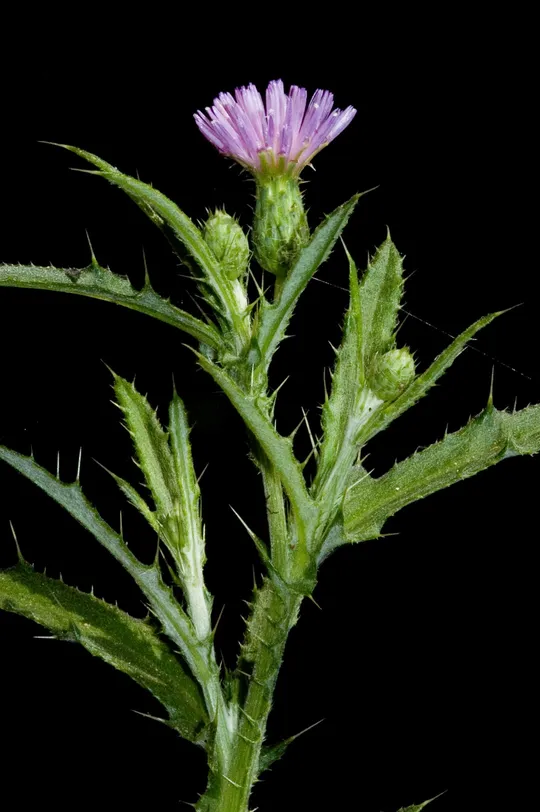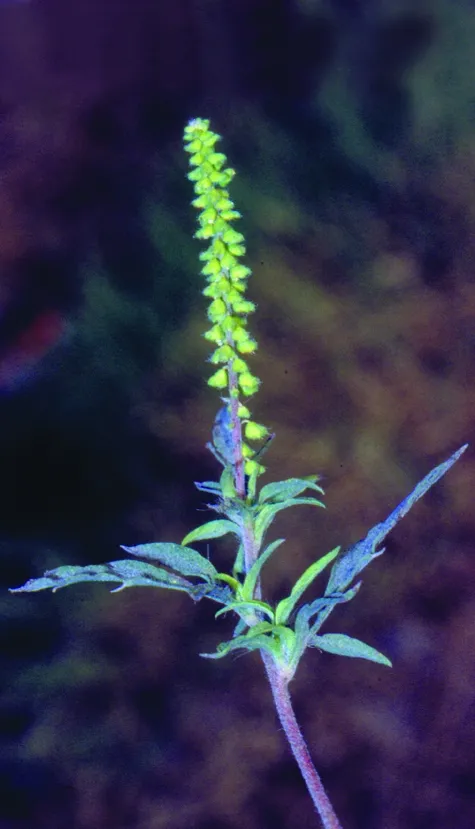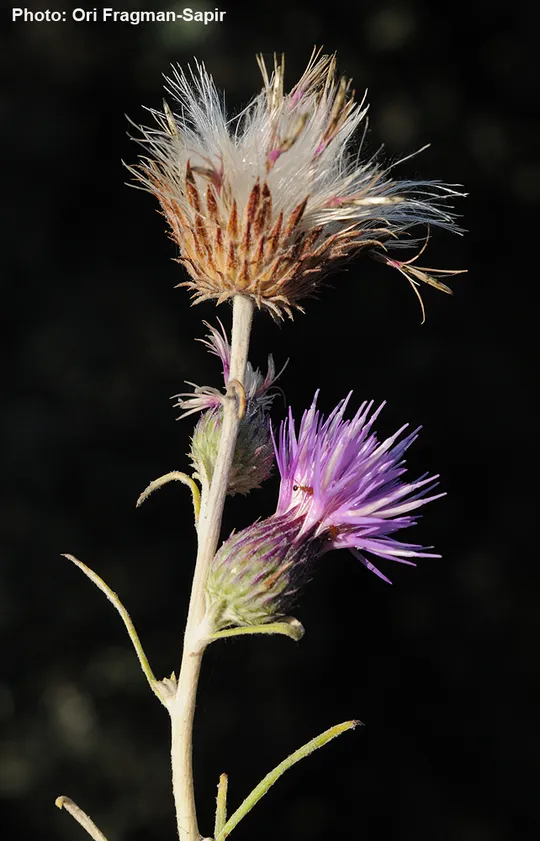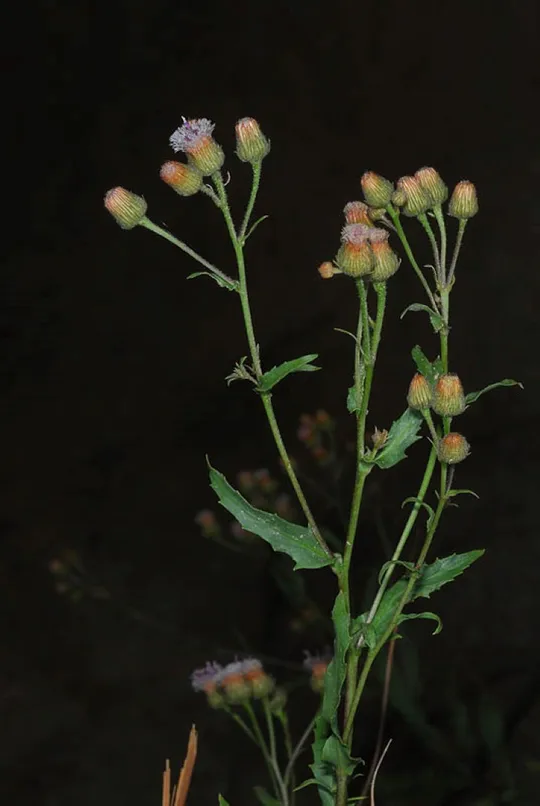Winged Plumed-thistle
Cirsium alatum

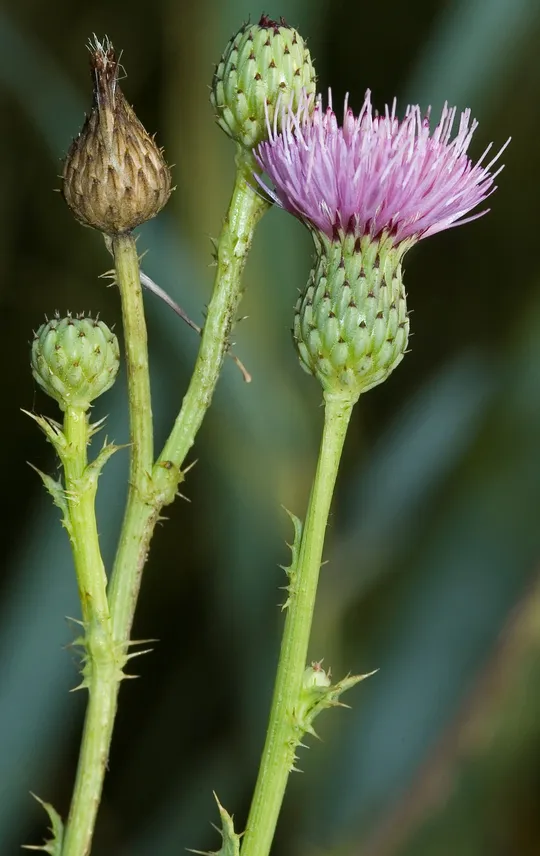
Cirsium alatum currently grows
in one region – the Kinarot Valley, where it grows in the Bet She’an Valley on
two sites: En Tayun east of En HaNatsiv and Enot Hasida near thel Harod Stream bed
east of Kibbutz Hamadya. In all the other springs surveyed in the Bet She’an Valley,
in a thorough survey conducted by Rotem observers, coordinated by David Porat
in 2007 and 2008, the plant was not found. However, it is possible to estimate
that there are a total of three sites in the country. C. alatum once grew on other sites in the Kinarot Valley – Masada, Kfar Rupin
and Neve Etan, but it is now extinct there. The plant is extinct in the Jezreel
Valley at HaKibbutzim Stream and En Homa southeast of Nir David, where it had
been observed until 1990. These sites are marked on the map. In the 2007-8
surveys, however, not a single plant was found there. The species was also
collected in the 1960s east of Afula, but was not found there since. All in
all, it is now extinct from five sites on which it once grew.
In Israel – fresh or brackish water wetlands, in hot
areas. Outside Israel, it grows particularly in saline steppes and brackish
water spring lakes that dry up in the summer, found on huge expanses in
southeast Russia and in Kazakhstan east and north of the Caspian Sea.
For the genus – see C. gaillardotii.
C.
alatum was described from the edges of the Don River and is known
in the section Cirsium as a special species that does not grow in freshwater
wetlands, but occupies salt marshes that dry in the summer and invades gypsum
and marl steppes. An endemic subspecies of C. alatum was described in
the Anatolia Heights, C. alatum ssp.
pseudocreticum, which grows on gypsum and salt steppes unrelated to
wetlands.
For the differences between C. alatum
and C. gaillardotii – see C. gaillardotii.
·
The number of
sites on which Cirsium alatum grows was always small, and the data
indicate a continuously decreasing trend in the number of sites, of which only
two remain today, in a single region.
·
The size of the
population counted on HaKibbutzim Stream in 1979 was 130 plants. In 1990 only 35
plants were counted there in three concentrations along a 250-meter strip s. thirty
plants were counted at En Tayun in 2008,
in varied phenological stages from small
individuals with only a rosette of leaves, flowering plants, plants with fruit,
and plants in the dispersal stage. Overall, there is a noticeable decreasing
trend in the number of individuals in surviving populations.
·
Changes in water
regimes were probably responsible for the extinction of C. alatum
populations at the sites from which they disappeared and these changes
apparently threaten existing populations as well. However, there is a lack of
information about the habitat conditions (water and salinity regimes) needed to
ensure the continued existence of the plants.
·
The sites at En
Hasida and at En Tayun are not located in nature reserves.
·
C. alatum does not appear in the red lists of other countries.
The En Tayun site east of Kibbutz En HaNatsiv, on which
a sustainable population exists, should be declared a local nature reserve. An
ecological and demographic study of the species should be conducted together
with water quality monitoring in the Bet She’an Valley springs, in order to understand
the optimal conditions for the sustaining viable populations. C. alatum should be grown from seeds in refuge gardens, and repopulating the En
Homa site and the section of HaKibbutzim Stream near Tel Shokek and Nir David
should be considered.
Grows in Eastern Europe to Central Asia: from the
coastal area of Bulgaria and Romania through Turkey, northern Iraq, Iran,
southern and eastern Russia to Kazakhstan and Uzbekistan. It is interesting
that the species is not noted from Syria and Lebanon, and therefore Israel
constitutes a southern disjunct island in relation to the general distribution
that is located to the north of it.
Cirsium alatum is a spiny
perennial herbaceous plant characteristic of saline springs and streams. It is
very rare in Israel and the number of its sites and the size of its populations
has significantly declined. The Bet She'an Valley is a southern disjunct
section of its global range, which increases the importance of preserving the
species.
Current Occupancy Map
| 1000 squre meter pixel | 5000 squre meter pixel | 10000 squre meter pixel | |
|---|---|---|---|
| number of observations | 0 | 0 | 0 |
| in total pixels | 0 | 0 | 0 |
| Family | Asteraceae |
| Classification | On the endangered species list |
| Ecosystem | Mediterranean |
| Chorotype | Irano - Turanian |
| Conservation Site | En Tayun near En HaNatsiv |
| Rarity |
1
5
6
|
|---|---|
| Vulnerability |
0
4
4
|
| Attractiveness |
0
0
4
|
| Endemism |
0
0
4
|
| Red number |
1
5.3
10
|
| Peripherality | N |
| IUCN category | DD EW EX LC CR EN VU NT |
| Threat Definition according to the red book | Critically endangered |
 Based on:
Based on:
